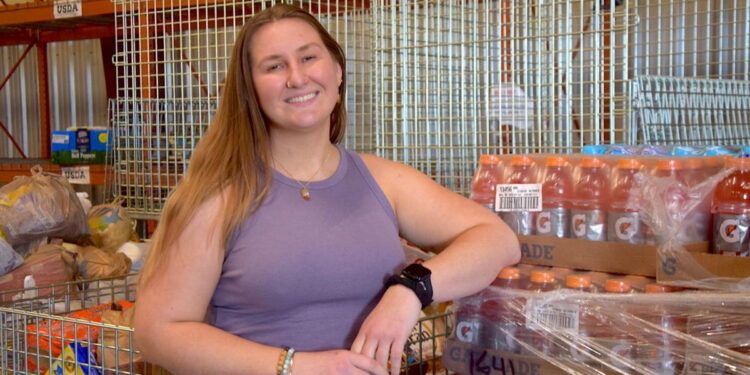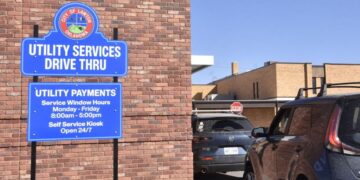More people are turning to the Lawton Food Bank after cuts to a government program.
With the end of COVID-19 emergency funding cutting monies for the Supplemental Nutrition Assistance Program (SNAP), the Lawton Food Bank has those in need of its assistance has grown.
Executive Director Ellen “Mac” Lechel said the non-profit has seen a surge since March when the cut took effect.
“Oh, my goodness, it has nearly doubled,” she said.
In Oklahoma, 557,000 Oklahomans whose incomes and assets fall within the limits qualify for SNAP or food stamps. According to the U.S. Census data collected, after extra SNAP benefits, one in four SNAP recipients report not having enough food.
Lechel said that’s where food banks come to the rescue. And with slightly fewer donations than normal this year, it’s a tough task making sure those in need are assisted.
“It’s hard to keep up with,” she said. “We are making it work and people are still getting a generous amount, but not what they’re used to getting.”
To get a picture of the difference a year and SNAP assistance makes, Lechel shared the Lawton Food Bank’s drive-through intake totals.
•In April 2022, 733 families and 1,828 individuals were assisted.
•This April, one month after the snip of SNAP, 1,128 families and 3,091 individuals were served.
•The weight of food goods were 111 pounds compared to 81 pounds this year.
“We strive to offer as much assistance as we can,” she said. “But we’ve definitely had to be more conservative since March.”
According to the Census report, changes in monthly SNAP benefits for a household of four people with a monthly net income of $2,000 has dropped to $339 per month compared to $939 a month with SNAP pandemic policies.
To qualify for The Emergency Food Assistance Program (TEFAP), an individual or family must meet the 200 percent Federal Poverty Guidelines, Lechel said. Income eligibility means an individual earning $27,180 may qualify, a family of four earning a combined $55,500 may qualify. For senior citizens, the threshold is 130 percent.
In 2021, Oklahoma was recognized by Feeding America as the highest state ratio for children with very low food security rates at 8.4 percent. Overall, Oklahoma was third in the nation with the highest projected overall food insecurity rates among its overall population.
Lechel said it’s like a high-wire act in trying to find a balance for families and resources.
“It can get a little overwhelming with inflation being what it is and the benefits being cut and, for us, lower donations and a rise in clients,” she said. “But my stress is nothing like what our clients have in trying to keep up with it all.”
With the Lawton Food Bank, individuals and families can receive food once every 30 days but they have to meet the income guidelines for eligibility, Lechel said. It’s just another thing for those already against the wall in trying to make life balance. Along with it affecting pride, it’s also another task in the way to being able to simply eat, she said.
“Nobody likes doing chores and it’s like an additional chore when you’re already pressed for money and time in order to receive assistance,” she said.
Want to reach a local audience and grow your business?
Our website is the perfect platform to connect with engaged readers in your local area.
Whether you're looking for banner ads, sponsored content, or custom promotions, we can tailor a package to meet your needs.
Contact us today to learn more about advertising opportunities!
CONTACT US NOW




